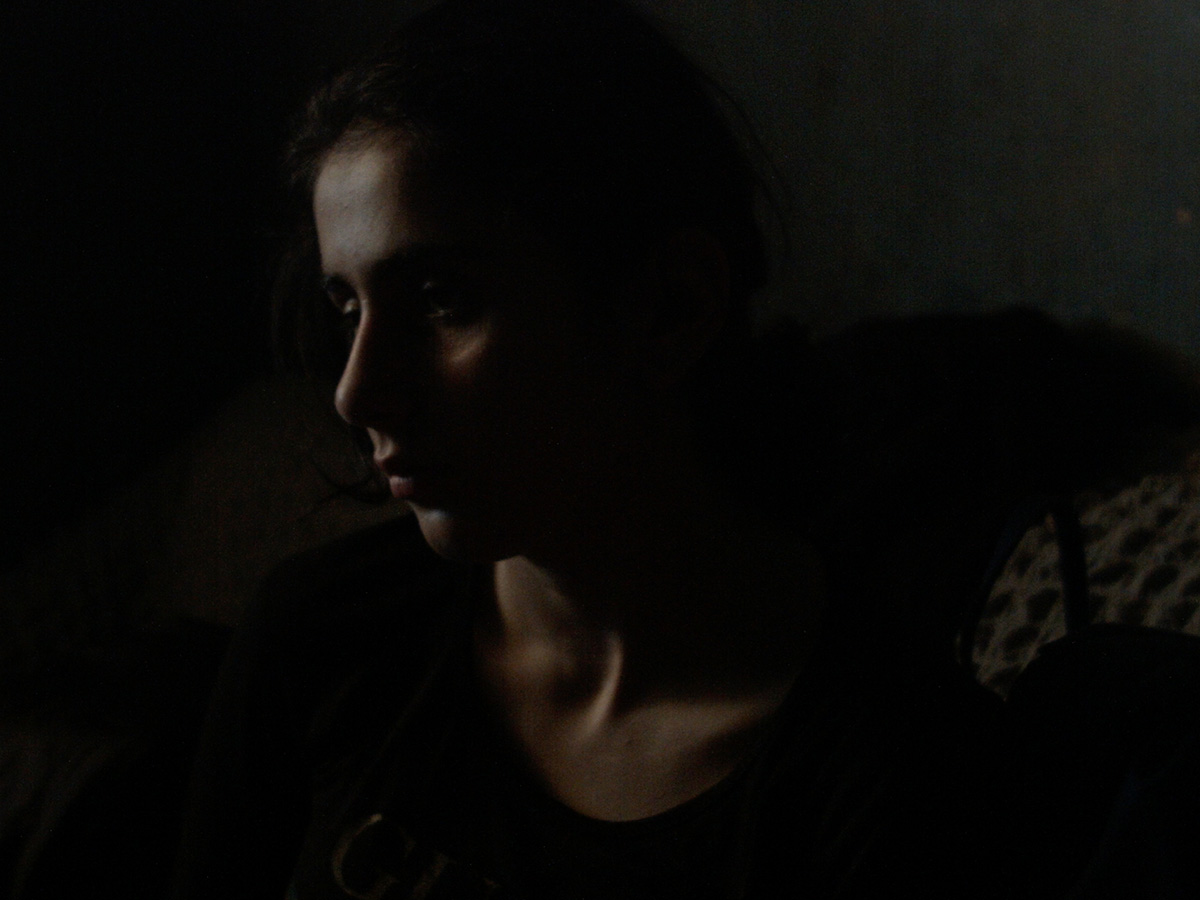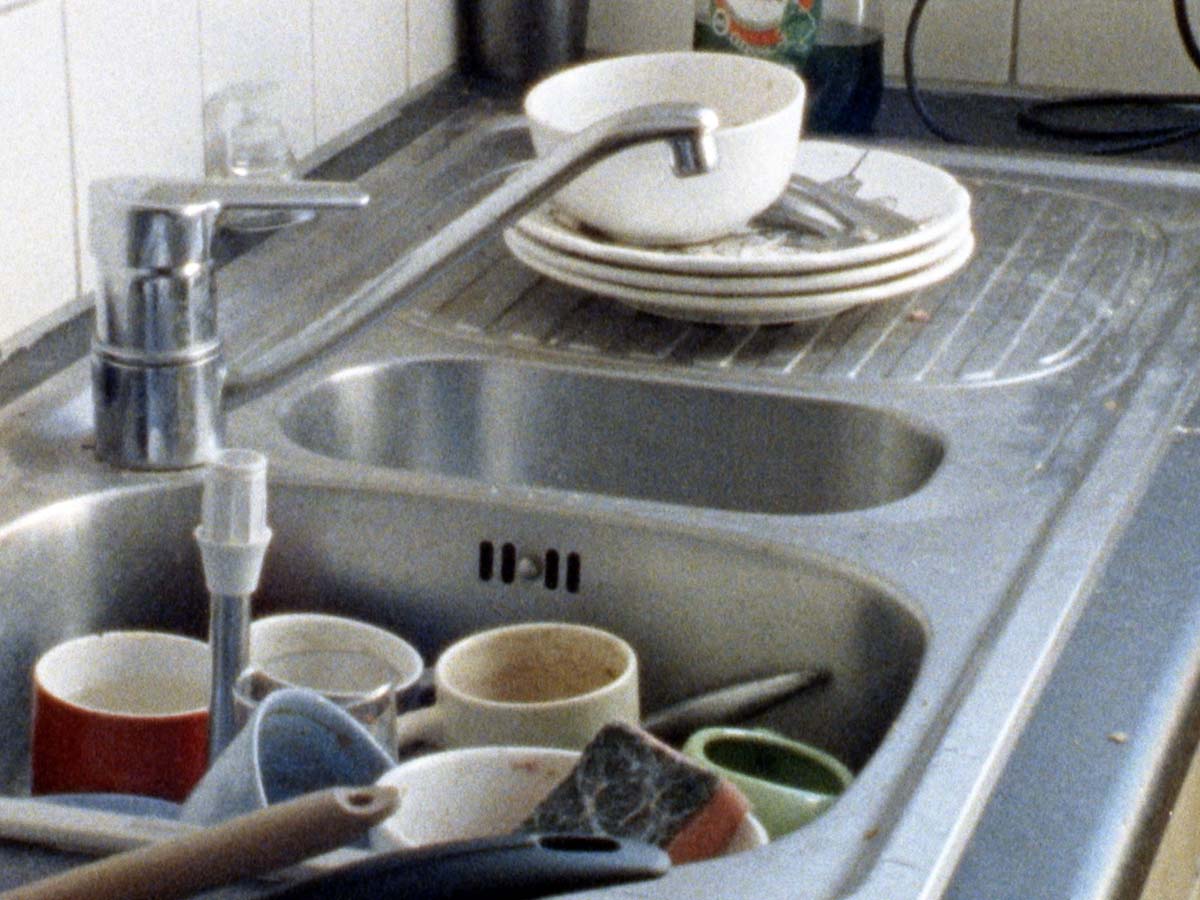
Da-Dzma
Winter. A fifteen-year-old girl in a remote Georgian town tries to get closer to her older brother just as he decides to leave home in search of work abroad.
For someone who has never had a sibling, watching Jaro Minne’s short Da-Dzma (Georgian for “a sister and a brother”) feels like stepping into new territory. With its slow pace and layered silences, the film stands out as a terra incognita of inarticulate feelings and preemptive loss. It’s a beautiful piece of universal, atmospheric filmmaking that strikes a chord in those who know and fashions that very same chord for those who don’t (yet).
During wintertime, when the wind rustles and time seems to stop, fifteen-year-old Dali slowly comes to terms with the departure of her older brother. The way she melts into the background in the scantily presented homeland gives us a visual hint of how the siblings have spent their lives closely intertwined. The brother’s work-related exit to Turkey promises a better life and broader means. But that far future means nothing in this moment of impending separation. All that matters for Dali is the present.
In his work, Belgian director Jaro Minne frequently explores the crossovers between East and West. He spent time in Georgia, resulting in the photography series “Passenger”, interested in the human face and the human scale of things in an overwhelming world. Rather painterly aesthetics are used to subtly convey a socio-political point. In Da-Dzma, Minne does something similar: through sparse compositions, little dialogue, and minimal sound design, the short lets us peek into a world of feelings one frame at a time.
Each frame is a world, and this brother and sister live in separate ones. At the beginning of Da-Dzma, Resuridze’s profile is the only thing we can discern in pitch-black. Her face is turned away from the camera, but a sliver of her forehead, nose, upper lip, and chin reflect a muted light (the source of it, off-screen). Her breathing makes the light bounce off her collarbone, yet she doesn’t speak. In her silence, we hear the ambience of a rather cold and naked room, perhaps lacking the softness of furniture or carpets to drown into. More than a reverb, less than an echo soundtracks the whole film in a similar way.
Then, the picture cuts to Shavadze’s face, visible in full when placed in the centre-frame; it seems like shadows are gnawing away at it. There he is, a face alone in a frame of darkness, forlorn like a Brancusi head sculpture. A brother painted in shadows so deep they threaten to flood everything and a sister who finds solace in sharing that same dimness even when kept a frame apart. The first time they actually share the frame is not an exchange of looks. On a bus, she sits in front of him; both have closed eyes, in their own world. She leans back on her seat, he leans forward: the seat—which splits the frame into two almost symmetrical parts—is both a barrier and a link.
For a short composed almost entirely of long, static takes, Da-Dzma surprises by also including a moving shot of togetherness when Dali and Mukho occupy the same frame for the second time, only a second or so. The panning sequence shows them gathering hay and stacking it just off-screen. In this repetitive left-to-right, right-to-left movement, the camera follows Dali and occasionally allows Mukho to come in, only to be left off-screen again. No looks exchanged, no words spoken. There is work to be done.
Da-Dzma is honest about the ambivalence between siblings but prefers to soften its edges. In the same vein, objects (like the bus seat), atmosphere (the interplay of light and shadows), and formal cues (like the panning shot) seem to carry a double meaning. A frame is never just a frame: it is also a window and an open door; it is the shadows cast by scarce natural light. Meaning and grief cannot be contained: unexpressed, they overflow. Da-Dzma’s shadowy silences intervene when putting love into words feels like an impossible task.
In Magic, a portrait of Joris, images sourced from different periods in time are glued together. Worn-out VHS footage filmed by the artist’s father is placed beside 8mm images she filmed herself. Both have the same subject: one boy, both a son and a brother. Connecting images of then and now, a new narrative of remembering opens up.



